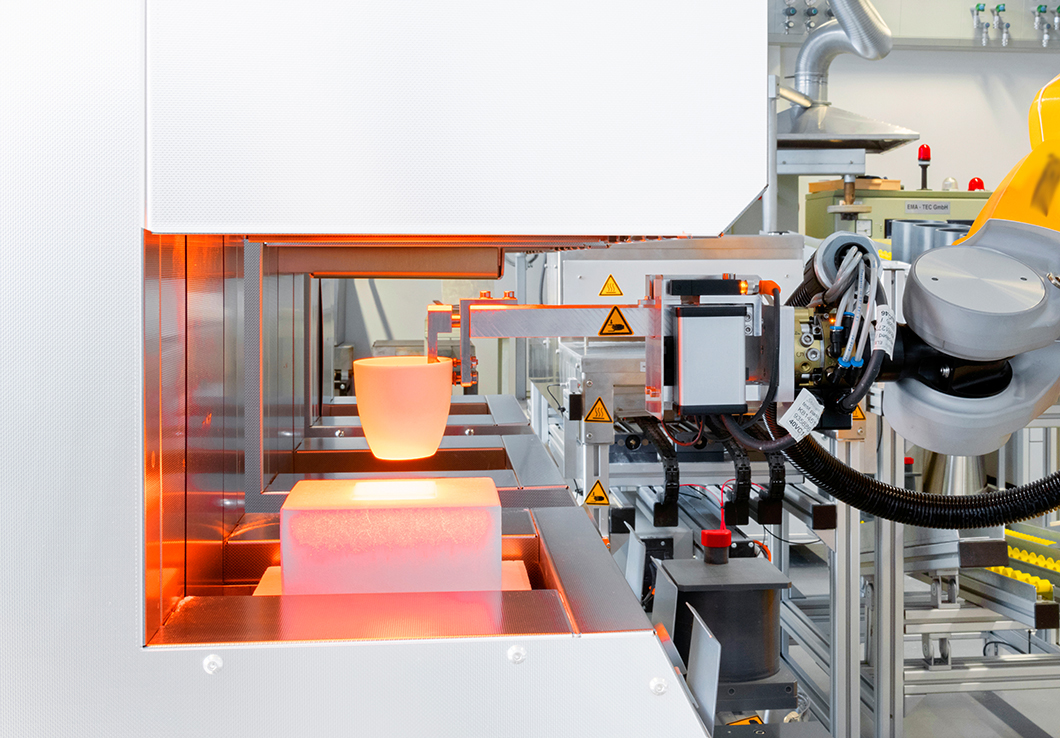
The number of connected things is growing rapidly. The image of a robot-assisted glass melting plant symbolises the Internet of Things
Source: BAM
New approaches to more sustainable production and consumption are necessary to cope with the present challenges in the use of energy and other resources. The Internet of Things (IoT) offers new possibilities even for product regulation. The development of the IoT is accelerating with the number of connected “things” having increased to more than 20 billion by 2020, including everyday objects such as home appliances. The availability, use, processing, and analysis of data from the IoT offer unprecedented opportunities including for the management of these products’ own lifecycle and thus for their sustainable use. This concern, for example, decisions on whether and when to repair or replace a product. But how could the optimal time for replacing a product be calculated? And furthermore, how could such a calculation and an IoT-based approach be used to set legal requirements for the durability of products?
The authors present a novel, data-driven approach to product regulation. In light of the opportunities provided by the IoT and the associated availability of data, a spotlight is put on the overall lifecycle management, and specifically the monitoring of energy efficiency and replacement management of smart products. The considerations are extended to possible implications for product regulation. Product regulation for home appliances in Europe seeks to improve sustainability by providing legal requirements for spare parts availability and repair instructions. Improving the repairability of products contributes to increasing their durability and thus their lifetime. Although legal requirements on how long a product must last are not developed yet the availability of real-use product-related information on the product’s life cycle facilitated by the IoT offers new opportunities to implement more individual product regulation specifically with regard to the product’s durability.
The authors discuss the potential of IoT in the context of legal product requirements. To this end, an overview of the EU product regulation is provided, explaining how it could benefit from the IoT and resulting availability of data from the real use of connected products. Subsequently, a big-data-based method is presented for calculating the optimum point in time to replace a product considering both ecological and economic aspects. The paper illustrates how such an approach could be applicable to requirements on the durability in product regulation.
Smart Products Enable Smart Regulations - Optimal Durability Requirements Facilitated by the IoT
Moritz-Caspar Schlegel, Claudia Koch, Mona Mirtsch, Andrea Harrer
published in Sustainability, Vol. 13 Issue 8, page 4395 , 2021
BAM, department Quality Infrastructure, section Accreditation and Conformity Assessment and
Section Ecodesign and Energy Labelling


